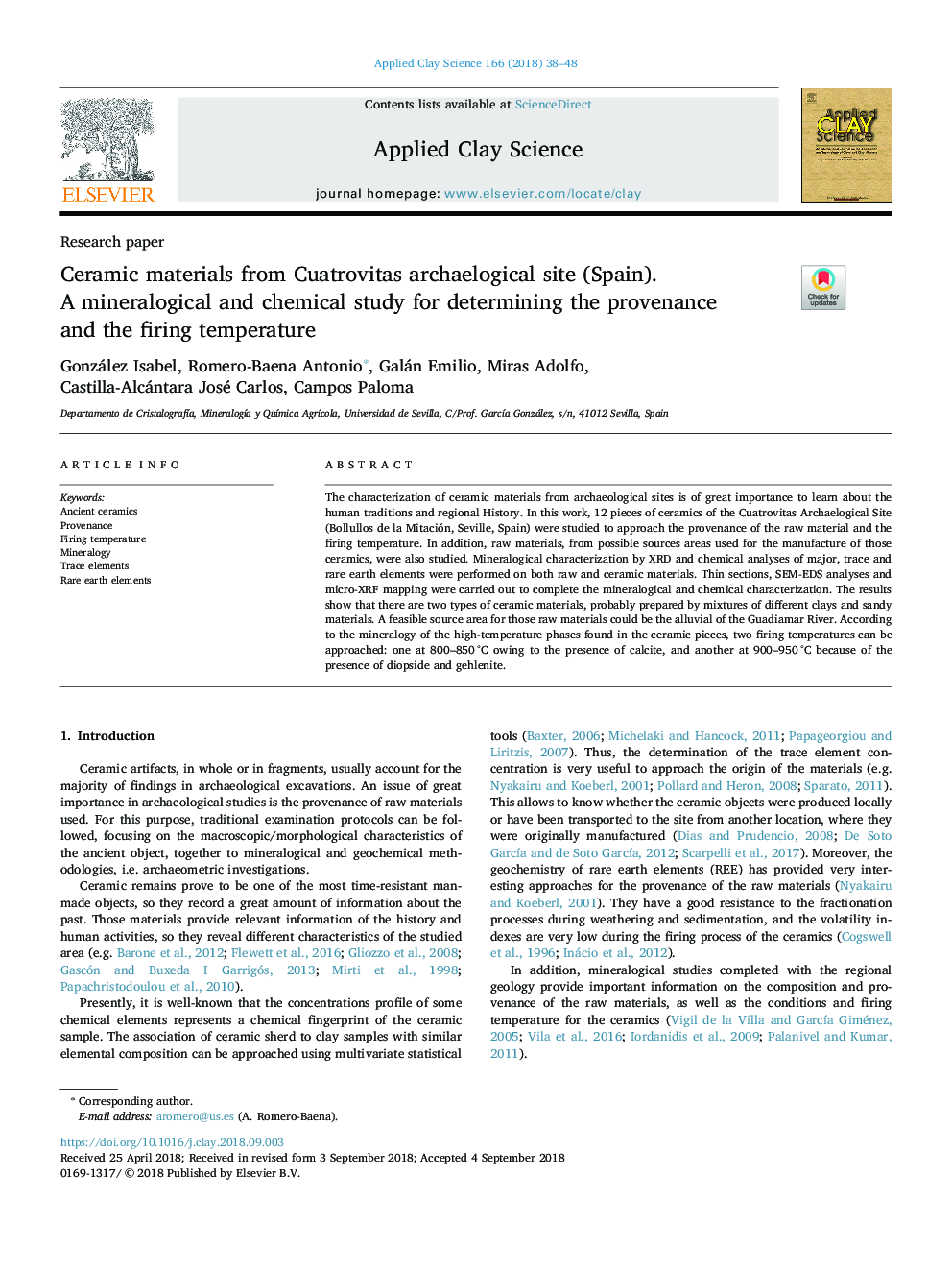| Article ID | Journal | Published Year | Pages | File Type |
|---|---|---|---|---|
| 10156134 | Applied Clay Science | 2018 | 11 Pages |
Abstract
The characterization of ceramic materials from archaeological sites is of great importance to learn about the human traditions and regional History. In this work, 12 pieces of ceramics of the Cuatrovitas Archaelogical Site (Bollullos de la Mitación, Seville, Spain) were studied to approach the provenance of the raw material and the firing temperature. In addition, raw materials, from possible sources areas used for the manufacture of those ceramics, were also studied. Mineralogical characterization by XRD and chemical analyses of major, trace and rare earth elements were performed on both raw and ceramic materials. Thin sections, SEM-EDS analyses and micro-XRF mapping were carried out to complete the mineralogical and chemical characterization. The results show that there are two types of ceramic materials, probably prepared by mixtures of different clays and sandy materials. A feasible source area for those raw materials could be the alluvial of the Guadiamar River. According to the mineralogy of the high-temperature phases found in the ceramic pieces, two firing temperatures can be approached: one at 800-850â¯Â°C owing to the presence of calcite, and another at 900-950â¯Â°C because of the presence of diopside and gehlenite.
Related Topics
Physical Sciences and Engineering
Earth and Planetary Sciences
Geochemistry and Petrology
Authors
González Isabel, Romero-Baena Antonio, Galán Emilio, Miras Adolfo, Castilla-Alcántara José Carlos, Campos Paloma,
